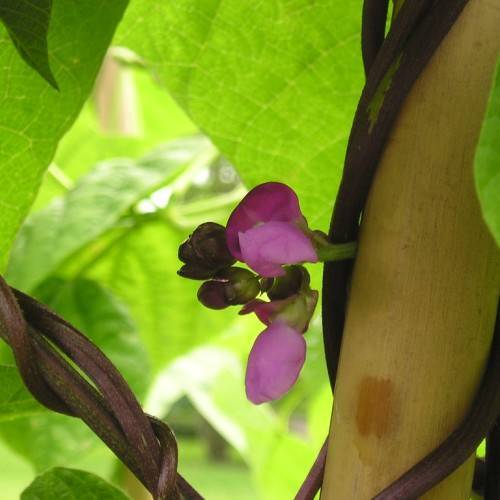
pole bean
Phaseolus vulgaris 'Blauhilde'
Cycle:
Annual
Watering:
Average
Hardiness Zone:
2 - 11
Flowers:
Flowers
Sun:
Full sun
Leaf:
Yes
Growth Rate:
High
Maintenance:
Moderate
Drought Tolerant:
Yes
Care Level:
Medium
watering
Pole beans should be watered once or twice a week during the growing season in order to keep the soil moist, but not waterlogged. The general guideline is to water plants in the morning, so that the foliage has time to dry before nightfall. However, in periods of extended heat, plants may require additional watering in the evening to prevent wilt. Be sure to check the soil prior to watering and only water when the soil is lightly dry to the touch. Avoid wetting the foliage for extended periods of time as this can cause fungal and other diseases.
sunlight
Pole beans (Phaseolus vulgaris 'Blauhilde') need lots of direct sunlight to grow and thrive. They should receive at least 6 hours of direct sunlight a day, ideally in the morning or early afternoon. If possible, try to give your pole beans up to 8 hours of direct sunlight each day for optimum growth. When planting your pole beans, make sure they have enough space between them so that they can all receive enough light. Additionally, make sure the area where the pole beans will be planted receives enough direct sun throughout the day.
pruning
Pole beans should be pruned about 2 or 3 weeks after they have been planted. After that point, any dead or weak stems that have not produced any flowers or beans should be removed. The goal of pruning is to open up the canopy of the plant and to encourage large, healthy, and well-spaced yields. It is important to leave at least 2 or 3 stems in the center of the plant to ensure proper pollination and adequate bean production. When the bean plant has grown to about 2 feet tall, it is time to pinch off the tops. This will promote branching and will help create a more compact structure and wider canopy of foliage, which is essential for ensuring plenty of sunshine and airflow. Additionally, remove any stems or leaves that have been affected by pests or disease. After pinching off the tops, any damaged stems should be trimmed away. Beans should also be pruned when in bloom to encourage more flowers and a greater yield. At this stage, remove any flowers that appear to be wilted, diseased, or overcrowded. Be sure not to over-prune, as this can cause stress for the plant. When the beans are ready to harvest, prune away any remaining diseased or dead stems. This will help prevent the spread of disease and maximize yield. Pole beans should be pruned regularly to encourage a healthy crop and adequate yields. With a few simple steps, pole beans can remain healthy and produce an abundance of delicious beans throughout the growing season.
